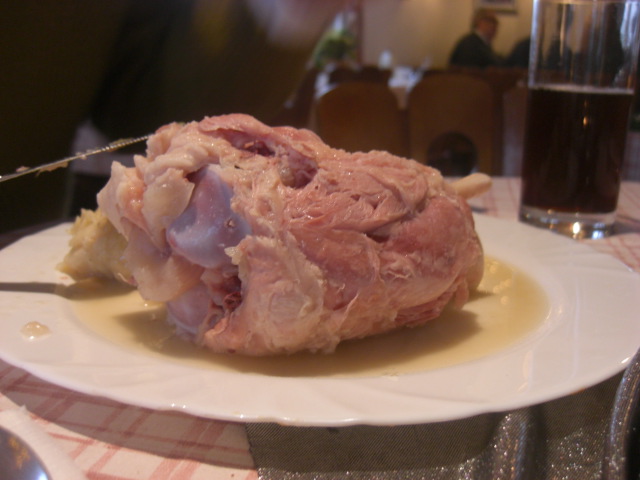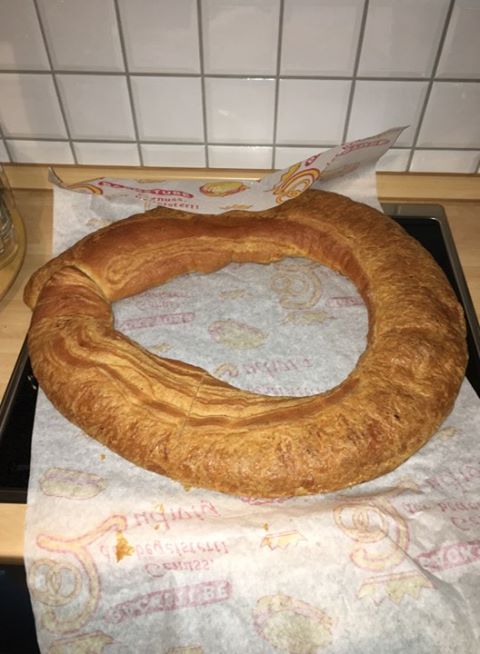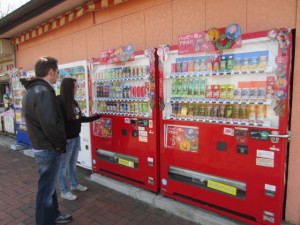Christmas traditions were quite different while growing up in a northern Bavarian village in the 1960s. Marketing and consumerism have changed the spirit of Christmas since then.
First of all, we never saw any Christmas decorations before Christmas, except for the traditional advent wreath (German: der Adventskranz).

I grew up in a farming family of nine people (parents, grandmother, aunt, and five children). When we kids got in the way, we were told to go outside and play. This was especially the case in the late afternoon to early evening on Christmas Eve. I suppose we played out on the side walk, went sledding, or sneaked around the barn, looking for cats, mice, or trouble.
On Christmas Eve, our day of gift-giving, we had an early and simple dinner – most often Sauerkraut and Bratwurst (fried sausage), or potato salad with Knoblauchwurst (pork sausage seasoned with garlic). Dinner had to be simple and quick, since the older family members had to set up Christmas behind the scenes – all afternoon and up to dinner time.
We younger kids got restless sometimes, and tried to peak through the key hole into the living room. We did this in spite my mother’s warning that if we got caught peaking by the Christkind (Christchild, the angel gift-bringer), she would not bring any presents.
The story we were told was this: The Christkind, an angel-like figure, dressed in white, with long curly blonde hair, would come in flying through the open window to deliver the presents. As a matter of fact, when we finally got called in, the room felt a bit chilly. The family must have been working on overdrive to get the tree decorated, the creche set up, the presents wrapped, and dinner made. They actually had to open the window for some cooling down.
When we walked into the room, we little ones were awestruck by the shining Christmas ornaments on the tree, and real candles lighting up the tree.
Typical presents at that time for me were (at least in our family): new pajamas, a doll, or a wind-up monkey.
I remember being really proud of my shiny new pajamas. 🙂 Note the Venetian Gondola, a souvenir my oldest sister had brought back from her honeymoon to Rimini in 1968.

Christmas Eve 1971
I got this kind of wind-up monkey for Christmas 1966. It did not last very long, unfortunately. The manufacturer is not to blame, just too many busy little hands. This one I found at a flea market in Kronberg in the late 1990s, and it still works. To keep him upright for his first photo opportunity in 50 years, I had to prop him up on a glue stick. Tired little monkey.

In general back then, our Christmas tree sat there from 24 Dec – 6 January (Epiphany). Then it was time to bring this season to a close. There was no Christmas tree pick-up service at that time, and being farmers anyway, my father chopped up the tree, and we burned it in one of the two wood stoves we had in the house (kitchen and bathroom).
Nowadays, in my own German-American family, we have fused both traditions, the German and the American one.
We put up the tree and its trimmings in the first/second week of December (American). We put our Christmas cards on display (American). We celebrate Christmas on 24 Dec (German). We used to make big dinners on Christmas Eve (my American husband liked this), but this year for the first time, we will have an easy and quick one – German potato salad and wieners (German). After sirty years, sis Cherman is finally getting her vay. 🙂
By the time the second Christmas holiday (26 Dec) rolls around, I’ve had it with Christmas. We take the decorations off the Christmas tree before New Year’s Eve (American). The tree rests on the balcony until we throw it off the fourth floor balcony on pick-up day (after Epiphany), and either we, or the Hausmeister, drag it to the side of the road.
Our Christmas tree with some ornaments as old as our marriage certificate (close to 30 years).

Before I forget – the Christkind brings the presents in central and southern Germany. Up in northern Germany, closer in location to the original Sinterklaas version (from the Netherlands) of Santa, there are families who tell stories of the Weihnachtsmann bringing the gifts.
Merry Christmas! Frohe Weihnachten!
Happy Holidays! Schöne Feiertage!










